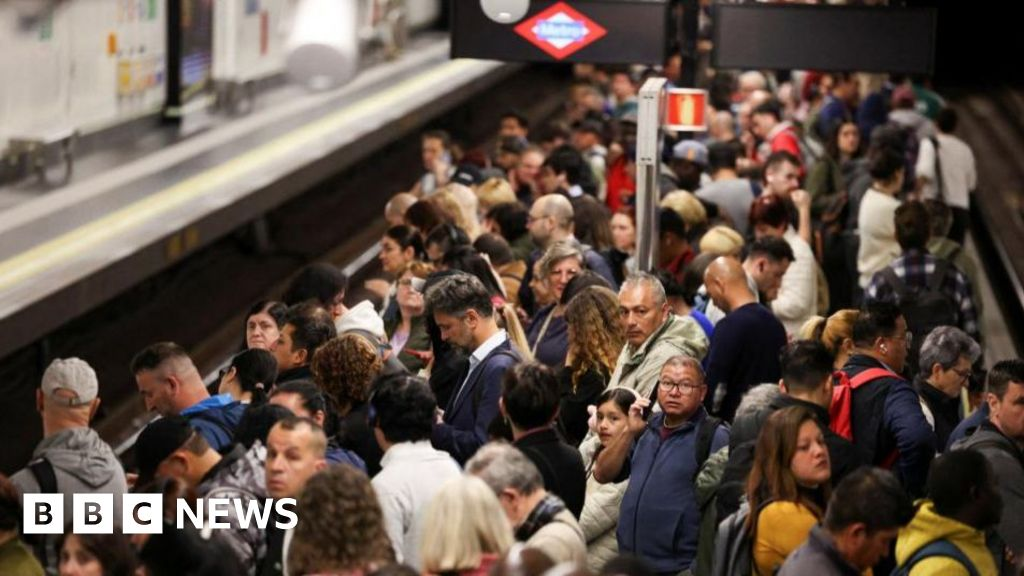From a France24 article on the complexity of this:
The electrical grid is a backbone with complex branches consisting of thousands of interconnected components.
“The grid operators must carefully analyse massive amounts of real-time data like frequency shifts, line failures, generator statuses and protection system actions to trace the sequence of events without jumping to conclusions,” Pratheeksha Ramdas, senior new energies analyst at Rystad Energy, told AFP.
Outages are often caused by a sudden shutdown of a source of production like a power plant due to a technical fault or a fuel shortage supplying thermal power plants.
In recent years, natural disasters such as storms, earthquakes, forest fires, extreme heat or cold sometimes intensified by global warming have damaged infrastructure or created peaks of demand for heating or air conditioning.
Other possible causes include overloads on high-voltage power lines, which force excess electricity to move to other lines, and cyberattacks, which the Spanish and Portuguese governments have ruled out, but which are an increasingly mentioned threat as networks become more digitised.
In Spain on Monday evening, grid operator REE mentioned a “strong fluctuation in power flows, accompanied by a very significant loss of production”.
In Europe, the electrical frequency on the network is calibrated to a standard of 50 hertz (Hz).
A frequency below that level means not enough electricity is being produced to meet demand.
In contrast, a frequency above 50 Hz means that less electricity needs to be made.
Operators have to order power plants in real time to produce more or less electricity according to demand to keep a frequency of 50 Hz.
“Maintaining that frequency is a matter of balance,” said Michael Hogan, senior advisor at the Regulatory Assistance Project, an NGO.
If the frequency moves away from 50Hz, automated protection systems kick in to cut off parts of the grid to prevent damage to equipment in a domino effect.
“Once power stations begin to shut themselves down for protection the situation can quickly get out of control,” Hogan told AFP.
“But… it’s very rare for that to reach the state it did in Iberia yesterday (Monday).”
…
How Monday’s problem all started is difficult to determine.
“One of the factors that most likely contributed to the instability is the weak interconnection between the peninsula and the rest of the western European grid, which meant that there wasn’t much inertia in that part of the network to dampen the oscillations on the Spanish side of the interconnection,” said Hogan.
But that is likely only a contributory factor and not the root cause.
“It will probably be the failure of one or two major transmissions facilities, which then cascaded to other connected parts of the network,” said Hogan.
“But what would have caused that initial transmission failure remains to be learned.”
An increasing number of public figures are blaming a saturation of solar power and an over-reliance on renewable energy.
Minutes before the outage, Spain was running on 60.64% solar photovoltaic generation, with 12% wind and 11.6% nuclear.
However diversified and advanced Spain’s energy mix is, the national power collapse at 12:35 on Monday required an enormous effort to get Spain back up and running.
The initial focus was to get the northern and southern power generating regions working again, which grid operator Red Eléctrica said was key to “gradually re-energising the transmission grid as the generating units are connected”.
The risk lay in overloading the system by turning everything on at the same time and triggering another massive outage.
So everything had to be carefully phased for what experts call a “black start” working out as a success.
The initial focus was on hydro-electric plants, in particular pumped-storage plants with reservoirs full at this time of year and able to produce electricity fast from a standing start.
Combined-cycle gas plants also played a significant part in repowering the grid, but four nuclear power reactors at Almaraz, Ascó and and Vandellós were automatically shut down by the outage, and three others were already offline anyway.
…
Spain is only now beginning to count the cost. The CEOE bosses’ organisation has estimated a €1.6bn hit on the economy.
…
Spain’s Guardia Civil police force said it had rescued 13,000 passengers trapped on trains.
Local police in Barcelona returned to the old ways, regulating traffic in the Plaça España because the lights were out.
Passengers on the Barcelona metro had to walk to safety using the torches on their mobile phones when their trains became stuck in tunnels.
More into the actual reasons:
Pedro Sánchez is determined that lessons will be learned and such a crisis will not happen again.
:But energy expert Carlos Cagigal told Spanish TV there was a risk that it might, because Spain’s infrastructure was simply not in a position to cope with all the renewable energy being produced.
The power grid operator warned earlier this year of the risks of excessive renewable energy while closing nuclear plants.
But a clip of its president Beatriz Corredor has gone viral from 2021, in which she insisted that Spain had “one of the safest and most advanced” electrical systems in the world and there was no reason to worry.
Lol , right wingers bashing on renewables , suuure



